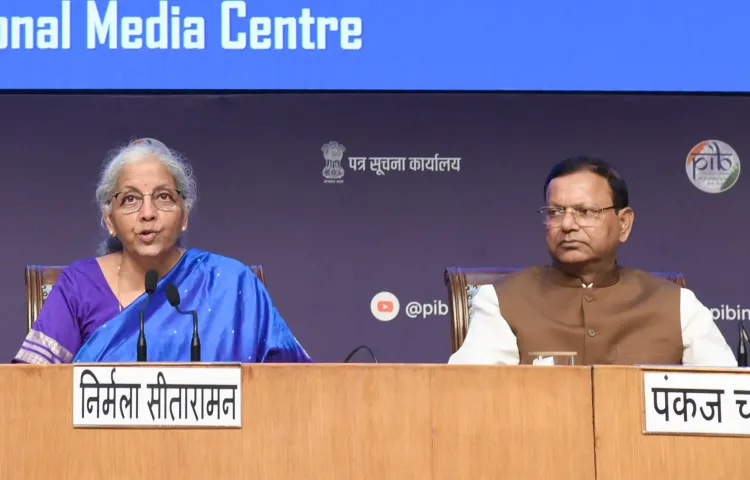What Factors Contributed to the 9.1% Rise in GST Revenues in September?

Synopsis
Key Takeaways
- GST Revenues rose by 9.1% in September.
- Collections reached Rs 1.89 lakh crore.
- Fastest growth in four months.
- Weak consumer spending on non-durables.
- GST rationalization to improve consumption.
New Delhi, Oct 1 (NationPress) India’s Goods and Services Tax (GST) revenues experienced a significant increase of 9.1 percent year-on-year in September, amounting to Rs 1.89 lakh crore, as per the data released by the government on Wednesday.
This growth indicates the steepest rate in the past four months and extends the series of monthly collections exceeding Rs 1.8 lakh crore for nine successive months. The recent surge marks a notable improvement compared to the 6.5 percent growth recorded in August.
Interestingly, this rise occurred despite declining consumer spending on non-durables, as shoppers delayed purchases in expectation of potential GST rate reductions.
During the second quarter of FY26, collections totaled Rs 5.71 lakh crore, representing a 7.7 percent increase year-on-year, although this is slower than the 11.7 percent growth seen in the previous quarter.
In light of the need to bolster domestic growth amid rising external sector challenges, the government has initiated a rationalization of the GST framework. This strategy aims to alleviate the tax burden on consumers, enhance consumption levels, and provide a buffer against tariff repercussions. Moreover, it is anticipated to improve demand visibility for businesses, allowing for expanded investment in additional capacities.
On another note, the Reserve Bank of India recently revised India's growth forecast upward by 30 basis points to 6.8 percent, up from its prior projection. Earlier this month, S&P Global Ratings affirmed that the economy would maintain a growth rate of 6.5 percent, with domestic demand somewhat mitigating the impact of U.S. tariffs.
Robust tax collections in recent months have considerably bolstered the country’s fiscal health and macroeconomic fundamentals, fostering stable growth.
The central government has implemented a two-slab GST rate of 5 percent and 18 percent on most goods, alongside a separate higher tax of 40 percent on sin goods like cigarettes, tobacco, and sugary beverages as part of the rationalization effort.









